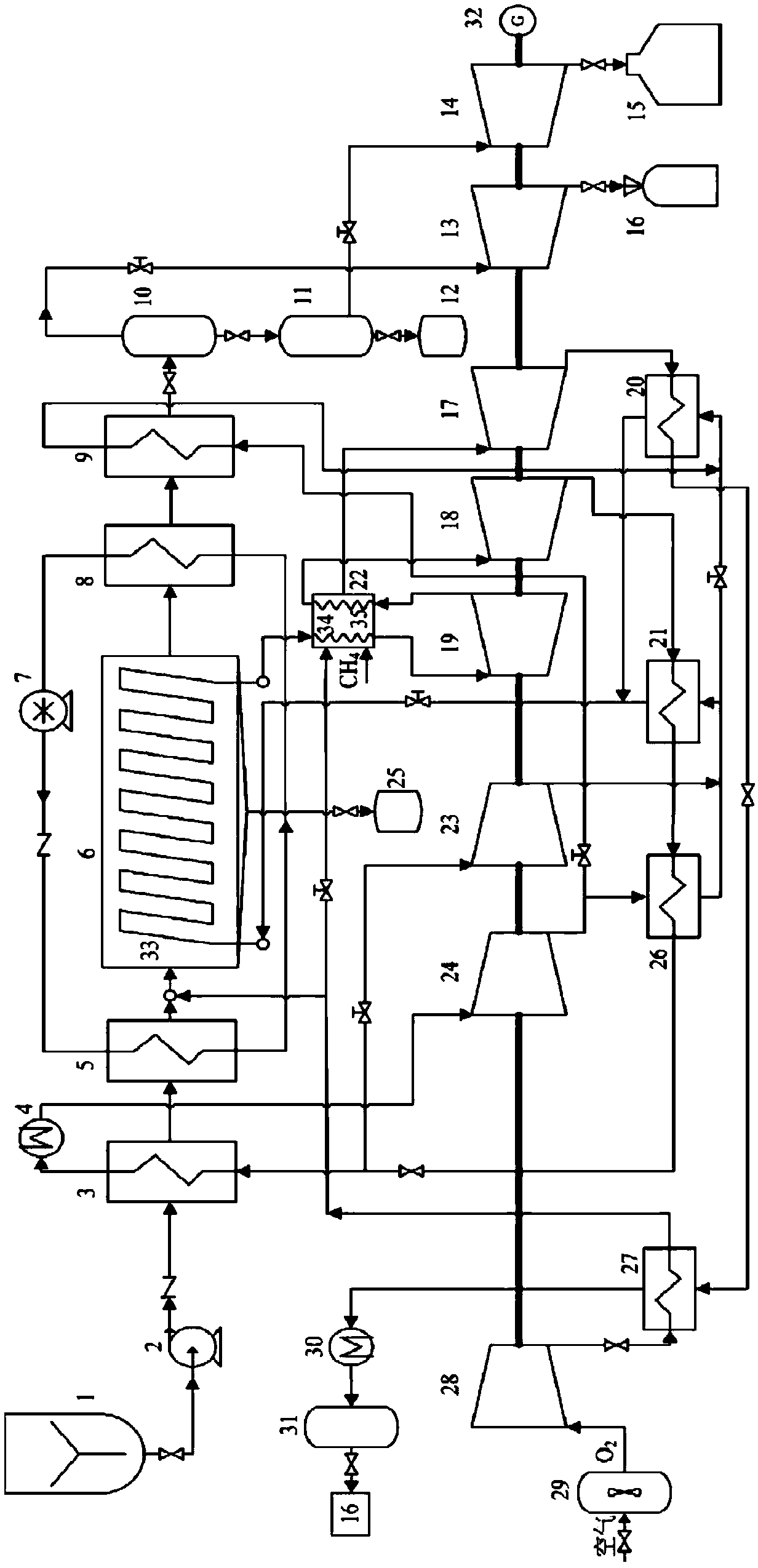Power generation system with supercritical water thermal combustion of coal and supercritical carbon dioxide cycle coupled
A supercritical water and carbon dioxide technology, which is applied to machines/engines, steam engines, mechanical equipment, etc., can solve the problems of large pollutant emissions, high energy consumption, high removal costs, and reduce heat loss and capture costs. Low, the effect of improving the overall efficiency
- Summary
- Abstract
- Description
- Claims
- Application Information
AI Technical Summary
Problems solved by technology
Method used
Image
Examples
Embodiment Construction
[0026] The present invention will be described in further detail below in conjunction with the accompanying drawings.
[0027] Such as figure 1 As shown, the power generation system coupled with coal supercritical hydrothermal combustion and supercritical carbon dioxide cycle includes coal supercritical hydrothermal combustion reaction system, supercritical carbon dioxide cycle power generation system and auxiliary heating system.
[0028] The supercritical hydrothermal combustion system of coal includes a coal-water slurry storage tank 1, a high-pressure coal-water slurry pump 2, a first heat exchanger 3, a second heat exchanger 5, a supercritical hydrothermal combustion reactor 6, and a circulating water pump 7. Third heat exchanger 8, fourth heat exchanger 9, carbon dioxide separator 10, particle separator 11, particle collector 12, gas turbine 13, water turbine 14, waste liquid treatment device 15, carbon dioxide capture device 16 , oxygen preheater 27, oxygen compressor ...
PUM
 Login to View More
Login to View More Abstract
Description
Claims
Application Information
 Login to View More
Login to View More - R&D
- Intellectual Property
- Life Sciences
- Materials
- Tech Scout
- Unparalleled Data Quality
- Higher Quality Content
- 60% Fewer Hallucinations
Browse by: Latest US Patents, China's latest patents, Technical Efficacy Thesaurus, Application Domain, Technology Topic, Popular Technical Reports.
© 2025 PatSnap. All rights reserved.Legal|Privacy policy|Modern Slavery Act Transparency Statement|Sitemap|About US| Contact US: help@patsnap.com

